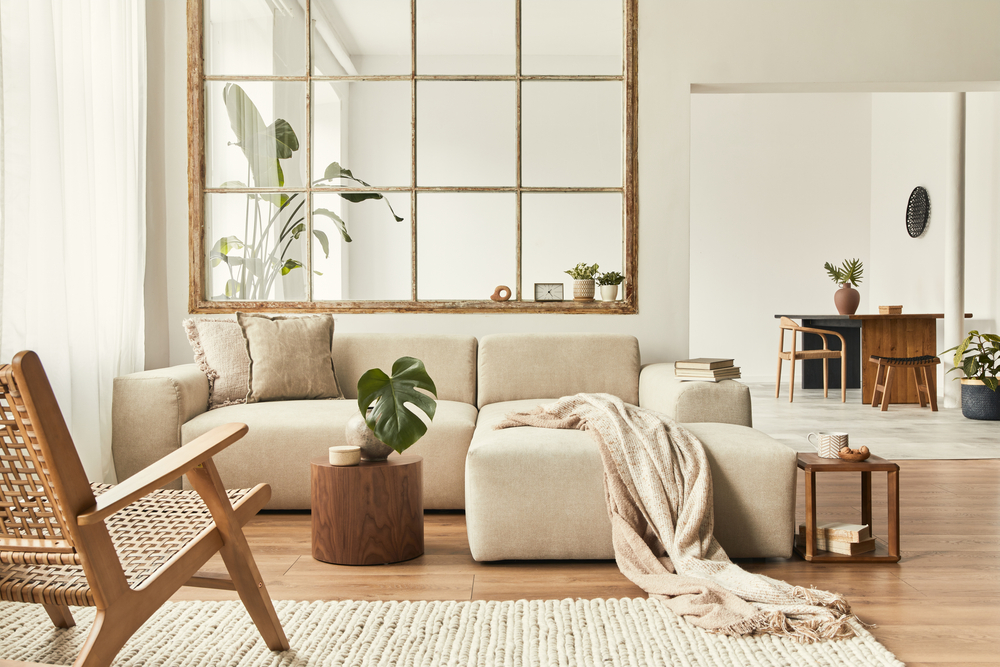With so many interior design styles to choose from, it can be challenging to know which is right for you. Interior design is ever changing, and new styles emerge often, but some remain as tried-and-true classics that homeowners gravitate toward time and again. If you’re interested in discovering which interior design style is best for your needs, we’ve listed several to help you narrow down your search.
Additionally, you don’t have to pick just one style to enjoy. Consider your home’s architecture, the location you live, and your personal preferences when making your decision. You can also blend nearly any design style with another to create the perfect aesthetic for you.
Go for a classic interior style

If you’re looking for an interior design style that suits your space, you can’t go wrong with one of the classics.
Traditional interior design
One of the most well-known interior styles is traditional design. Traditional home design features dark wood tones, ornate carvings, crown molding, hardwood floors, granite countertops, and glam touches. You’ll see patterns like stripes, plaid, and florals upholstered on furniture, crystalline chandeliers hanging from the ceiling, and detailed woodwork throughout the home.
Modern design
Modern home design defines a period of styles in the 20th century. Midcentury, post-modern, minimalism, and Scandinavian designs all fall under the modern umbrella. Contemporary design, however, is not synonymous with modern design. They are two distinct styles. Modern home design features sleek, straight lines and minimal decorum. Neutrals like white dominate the color palette, but pops of bold colors are often seen throughout. There is a focus on shape and form in modern spaces.
Minimalist home design
Minimalist home design takes a “less is more” approach. There is a focus on simplicity, muted or neutral color palettes, light decor, and sleek, refined furniture. Floors are usually light in tone, and white and gray dominate color palettes. Minimalists keep things simple so you won’t see excessive shelving, furniture, or decor scattered throughout.
Midcentury modern interior style
Midcentury modern design emerged in the mid-1900s. From 1950 to 1970, a breadth of design aesthetics became popular as people experimented with color and form. You’ll see bright pops of color, the iconic egg chair, hairpin legs on furniture, abstract, oversized light fixtures, and low-profile furniture in midcentury modern interiors.
Modern farmhouse home design
Modern farmhouse home design has been one of the most popular styles in the last few years, particularly during the 2010s. Shiplap, wide planked flooring, white and beige colors, raw woods, farmhouse sinks, and wood beams on the ceiling are notable features of this design style. It blends classic farmhouse decor with sleek, modern finishes for a more refined look.
Rustic interior design
Rustic interior design offers a woodsy cabin vibe. There’s an emphasis on dark wood tones, raw materials, stonework and masonry, and iron details. Rustic design often has some farmhouse or cabin charm but takes a more natural, outdoorsy approach. Wood and stone textures are softened with wool textiles, cowhide rugs, and fur throw blankets.
Industrial interior design style
As factories closed and populations increased, American cities began converting old warehouses and facilities into residential areas. This inspired industrial home design to use exposed pipes and beams, brick, raw wood, concrete, oversized artwork, high ceilings, metal support beams, and utilitarian decor.
Eccentric interior design ideas

If you crave to show off your personality in your space, you’ll want to learn about these eccentric interior styles.
Bohemian interior design
Bohemian design, also called boho design, is a style that reflects the homeowner’s travels. You’ll find souvenirs, trinkets, fun patterns, plants, and mismatched pieces pulled together into a unique look. Rattan furniture, woven materials, Moroccan rugs, neutral tones, and plenty of diverse cultural touches make this style distinctive.
Maximalist home design
Maximalist home design is all about going bold with color, pattern, and decor. Layered rugs, patterned upholstery, wallpaper, jewel tones, color drenching, excess pillows, and plenty of knickknacks define the maximalist style. You may also find animal prints and plenty of plants spread throughout a maximalist design as well.
Trendy home design styles

Home design is ever changing, but there are some gorgeous aesthetics that are on trend right now.
Coastal interior design
Coastal interior design is inspired by homes that reside right on the beachfront. Blue, beige, and white are the base of color palettes, representing the beach. You’ll see wicker, stripes, nautical decor, seashells, and light tones used throughout the design to best reflect the beachfront aesthetic.
Scandinavian interior design style
Nordic traditions and landscapes inspire Scandinavian interior design. The design is often depicted in cool tones with simplistic furniture. Natural and organic touches, light, ashy woods, minimalist aesthetics, and airy pieces are staples of this design style.
Transitional home style
Transitional interior design blends traditional home decor with contemporary styles. There is a focus on minimalism, curved lines, lacquer, rattan, light color palettes, and polished woods. Large area rugs, shaker cabinets, and traditional furniture with a modern edge define this style.
Home design is ever evolving, and there are plenty more styles than those mentioned here. It’s also important to note that you can blend styles to find what works for you. If you love farmhouse design but crave something more rugged, rustic-farmhouse is a fantastic combo. Play around with each style to find what best suits your needs.




